Nikon Nikkor AF-S 24-70 mm f/2.8G ED
9. Ghosting, flares and transmission
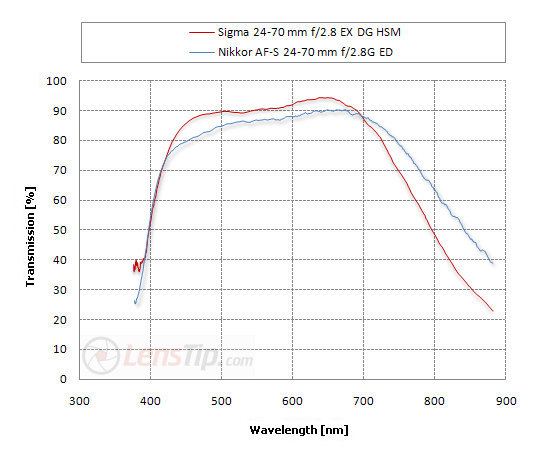 |
Such a comparison for the Nikkor is quite painful. Not only does the Sigma boast more elements’ groups so more air-to-glass surfaces to cover, but also it fares by several percent better in the most important range from 430 to 700 nm.
Please Support UsIf you enjoy our reviews and articles, and you want us to continue our work please, support our website by donating through PayPal. The funds are going to be used for paying our editorial team, renting servers, and equipping our testing studio; only that way we will be able to continue providing you interesting content for free. |
- - - - - - - - - - - - - - - - - - - - - - - - - - - - - - - - - - - - - - - - - - - - - - - -
The maximum 90% of transmission with 22 air-to-glass surfaces in the Nikkor is not anything to be proud of because it means that on one surface we lose about 0.5%. In the blue part of the spectrum that loss is even increased to as much as 1%. Taking into account the fact that the best coatings we have been testing so far had losses at the level of 0.2-0.3% the Nikkor lags far behind the best instruments.
You can’t also talk about any casts given by optics from independent producers. The shape and inclination of the Nikkor’s and the Sigma’s transmission curves are almost identical (some differences can be notice only for the infrared) so if there is any visible cast in the photographs it must be exactly the same for both of these lenses.
The coatings, so touted by the producer, not only fared averagely well when it comes to the transmission but also didn’t manage to damp down flares completely during the work against bright light. Flares are present at every focal length although neither their number nor their intensity are especially high. The Nikkor compares unfavourably with the Sony, the Sigma and the Canon here, though.
Let’s have a glance how the situation looks on the smaller sensor of the Nikon D200.
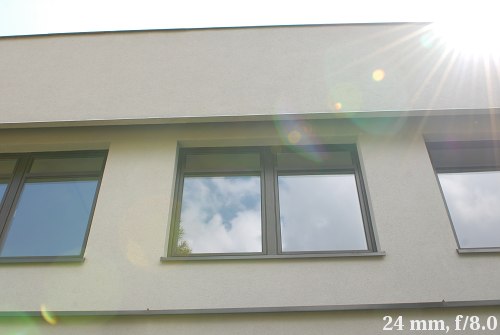 |
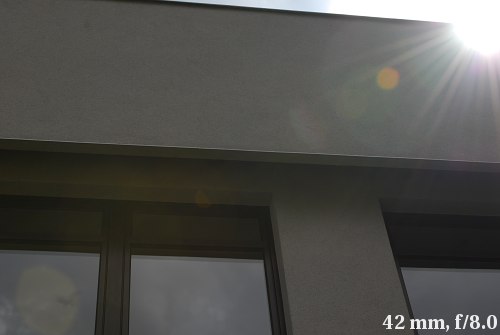 |
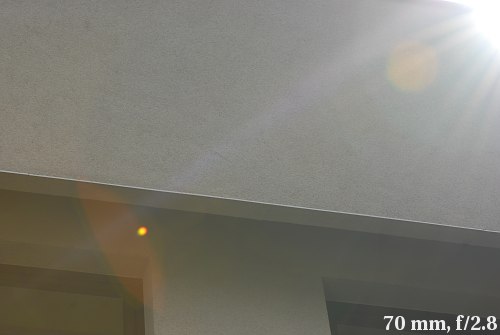 |
Below we present pictures taken with the full frame Nikona D3x.
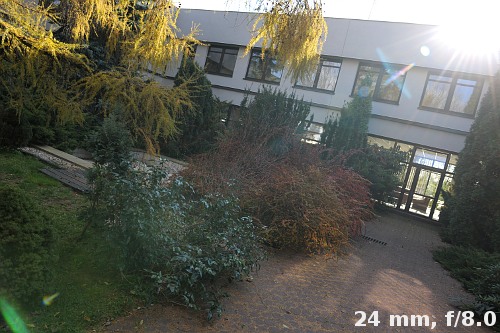 |
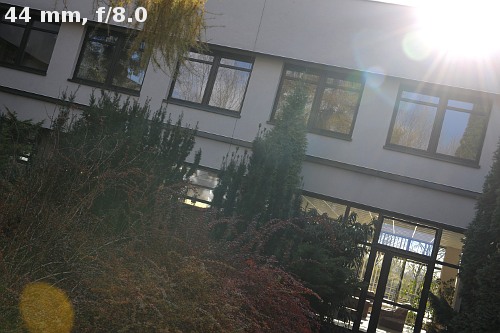 |
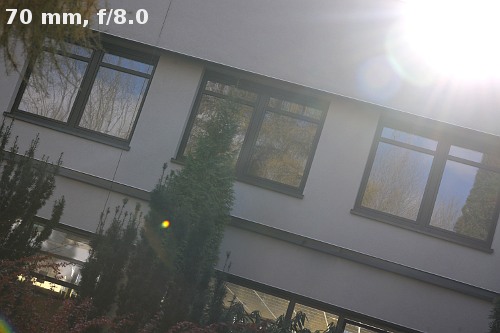 |
The overall tendency is such that significant artifacts are easier to catch on stopping down a lot. Near the maximum relative aperture there are less flairs with high intensity but the whole contrast of the image is lower.






